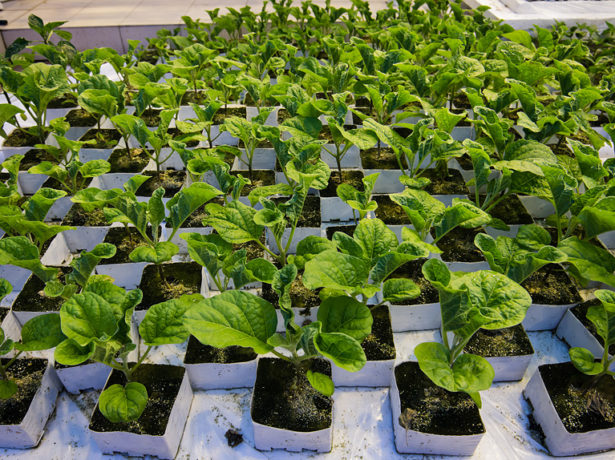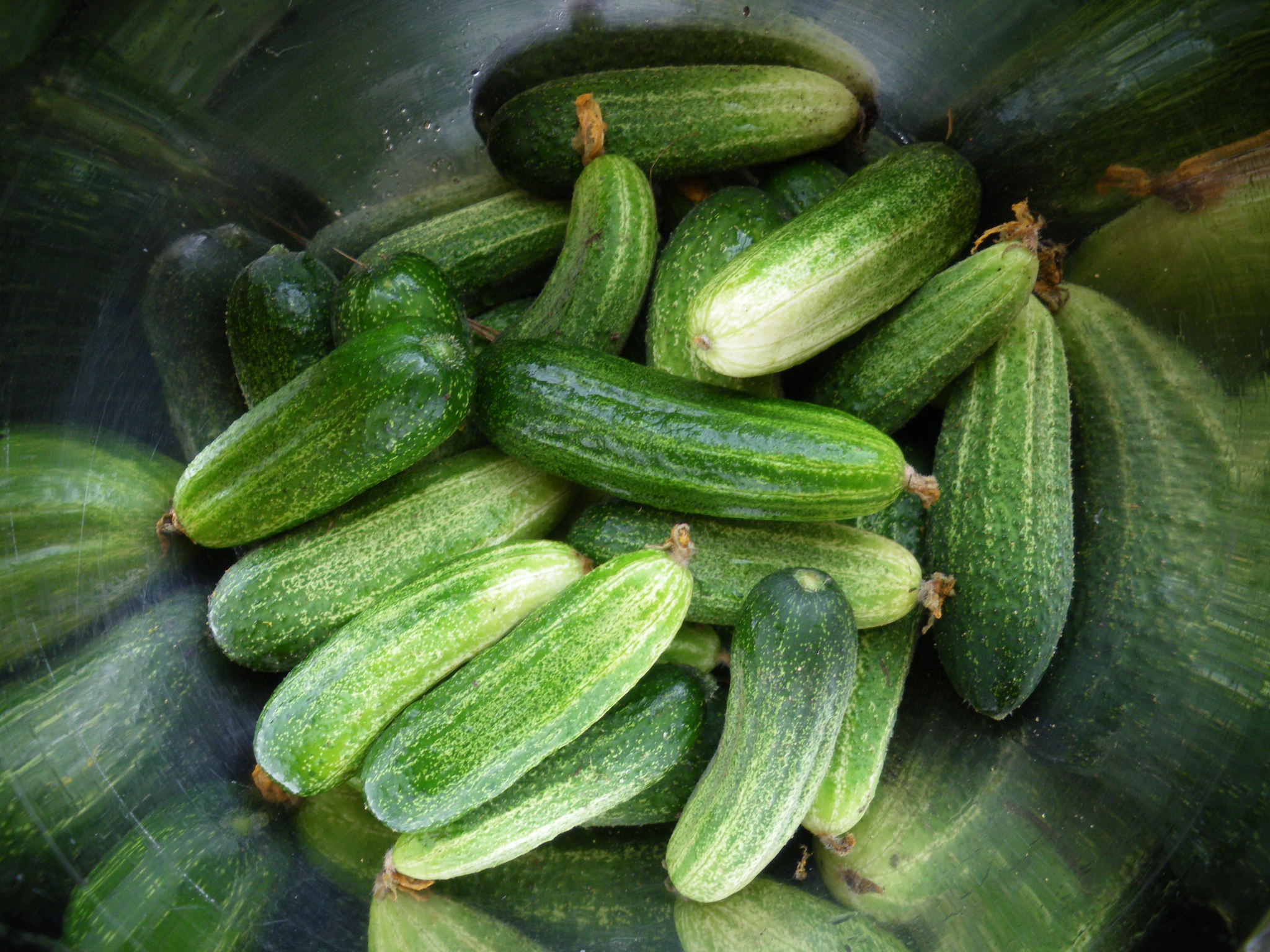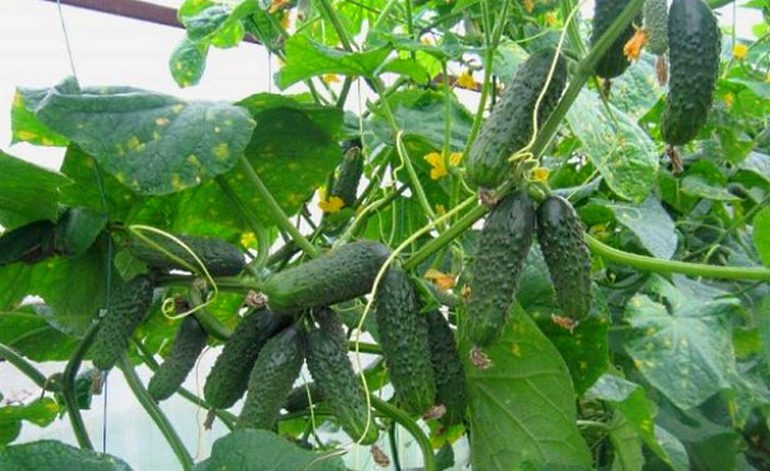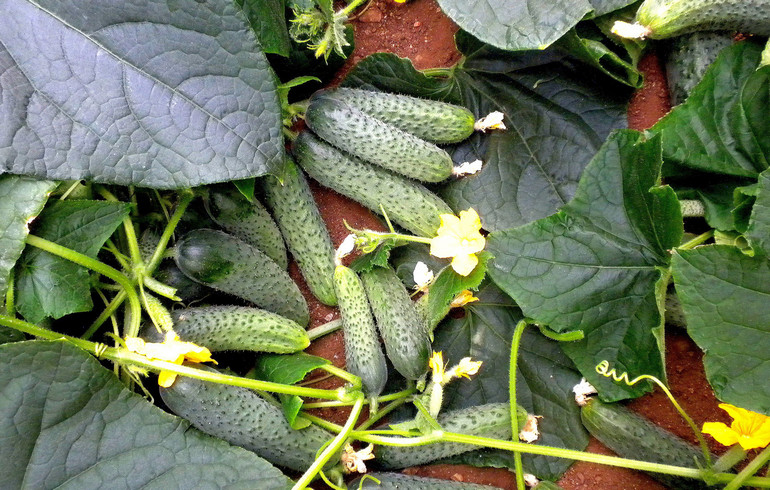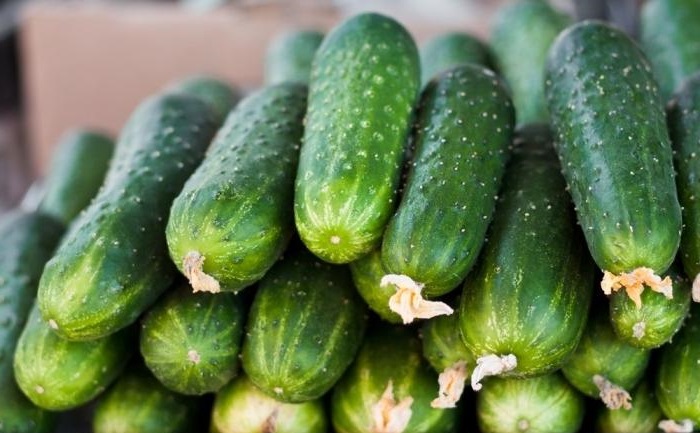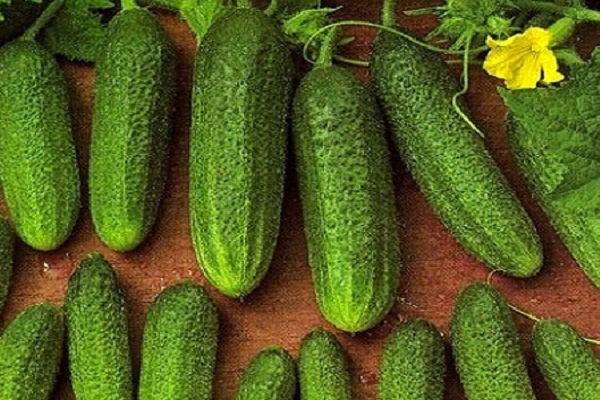Cucumbers Puccini - hybrid... It was sectioned in the Netherlands. Dutch varieties have their own characteristics - the reliability of seed growth, disease resistance, high yield.
Description of the variety
The Puccini cucumber is considered mid-season. The flowers are only pollinated by insects, which is why the variety is difficult to grow in greenhouse conditions.
Positive characteristic of the variety:
- versatility of fruit use;
- high productivity;
- resistance to various diseases.
The disadvantages include:
- seed cost;
- the inability to grow the variety in greenhouse conditions.
Since the variety is hybrid, it is impossible to collect seed material from it for planting next year, it loses its parental properties.
Growing features
Before planting cucumber seeds in open ground, it is advisable to apply fertilizers to enhance fruiting.
Suitable for this:
- peat;
- humus;
- chicken droppings.
Organic fertilizer must be used 5 kg. for 1 sq. m. It is recommended to do this in the fall, and then dig up the ground.
Seeds are planted in open ground then, when the soil has warmed up enough and the air temperature is set on average 18 0C, i.e. around the beginning of May.
Put 2-3 grains in each hole, after moistening the soil. The seeds are deepened to a depth of 2 cm. For better seed germination, you can cover the holes with agrofibre.
Puccini cucumber can be grown in seedlings. Seeds are sown in containers with soil in early March. After the emergence of shoots in a month, the plant is planted in the ground.
The optimal planting scheme for this variety of cucumbers is 50 × 50. Although this variety is bushy, it can be tied up to enhance fruiting.
Top dressing and care
After 15 days from the moment the seeds rise, the first fertilizers can be applied. This must be done in 3-4 stages every 2-3 weeks.... Organic fertilizers can be used:
- chicken droppings in a ratio of 1:15 to water;
- mullein diluted in water in a ratio of 1: 6;
As a fertilizer, wood ash is suitable for almost any vegetables, including cucumbers (1 liter of substance per 10 liters of water). Mineral fertilizers are also used:
- 1 tbsp. l. urea, 60 gr. superphosphate is diluted in 10 liters of water;
- 10 gr. ammonium nitrate, 10 gr. superphosphate, 10 gr. potassium salt is dissolved in 10 liters of water.
Caring for the plant includes weeding the soil and loosening the soil to circulate oxygen.
If the soil is too waterlogged, rotting of the root system can occur, as a result of which the plant will die. In cold and cloudy weather, watering is reduced. Most of all, cucumbers like drip irrigation, through which fertilization can also be applied.
Fruits appear on the 53rd day from the moment of seed germination. The weight of one cucumber is 70-80 gr. Fruit parameters (length and diameter) - 3.4: 1.0 Fruits are crispy, aromatic, without bitterness, cylindrical in shape with tubercles.
It is necessary to harvest the fruits in the morning, when they have gained maximum moisture. It is necessary to walk very carefully along the cucumber plantation so as not to step on the whips and not harm the plant stems. On fallen branches, fruiting may decrease.
https:

